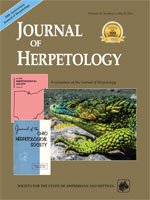Plethodontid salamanders are often monitored as indicator species for mature forest ecosystem health. In addition to relative abundance, differences in standard metabolic rate (SMR) between harvest treatments have been used to explain physiological stress in response to timber harvest. Nearly ubiquitous in forested stands throughout the northeastern United States, the Eastern Red-Backed Salamander (Plethodon cinereus) is often the focal species of such studies. In 2010, a predictive multiple regression equation was developed to calculate SMR of P. cinereus to 95% accuracy using salamander body mass and temperature. This method of SMR estimation has been implemented in field studies as a measure of salamander health. In these studies, temperature regime is the only variable measured, and SMR is calculated by standardizing on a 1-g salamander. In this study, we measured both body mass and temperature of each salamander encountered in harvested and unharvested stands and compared the published SMR calculation technique with SMR calculated using observed temperature and body mass data. We found larger variability in temperature in harvested stands using both methods but did not identify a similar trend in the SMR of observed salamanders. Differences in salamander body mass and snout–vent length between harvested and unharvested stands in Fall 2013 suggest that researchers should use caution when making claims about SMR when data on salamander body mass has not been measured.
How to translate text using browser tools
1 March 2016
Field-Testing a Standard Metabolic Rate Estimation Technique for Eastern Red-Backed Salamanders
Patrick J Ruhl,
Robert N Chapman,
John B. Dunning
ACCESS THE FULL ARTICLE

Journal of Herpetology
Vol. 50 • No. 1
March 2016
Vol. 50 • No. 1
March 2016




